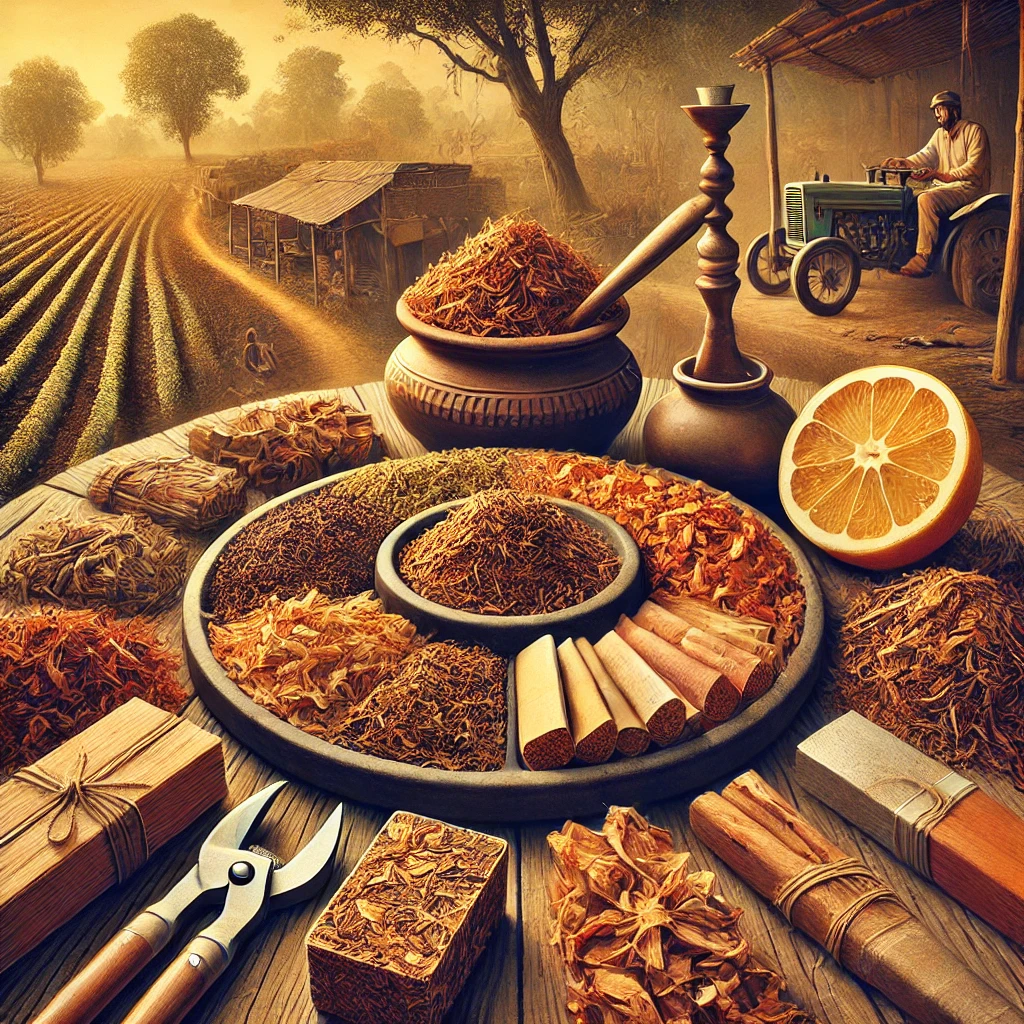
Raw Tobacco in India: Forms and Consumption Patterns
India, known for its cultural diversity and agricultural richness, holds a complex relationship with tobacco. While the world often associates tobacco with cigarettes, in India, raw tobacco takes on multiple forms, deeply intertwined with the country’s traditions, rituals, and daily life. Despite global awareness of the health risks associated with tobacco use, its consumption in India remains widespread due to cultural, economic, and social factors.
#1. The Many Faces of Raw Tobacco
Raw tobacco in India is consumed in various forms, each reflecting the country’s regional diversity and historical practices. Some of the most common forms include:
- Khaini: A mix of tobacco and slaked lime, khaini is one of the most widely used forms of smokeless tobacco in India. Users typically place it between the gums and cheek, allowing the nicotine to be absorbed.
- Zarda: Flavored tobacco often mixed with betel quid (paan), zarda is popular in North India and is an integral part of social gatherings and rituals.
- Gul: A powdered tobacco product used primarily for dental purposes, gul is popular in rural areas where access to oral healthcare is limited.
- Snuff: Finely ground tobacco inhaled through the nose, snuff has a historical legacy in India, particularly among older generations.
- Beedis: Though not raw tobacco in the purest sense, beedis are a traditional form of hand-rolled cigarettes made with tendu leaves and raw tobacco, consumed widely in both rural and urban areas.
- Hukka (Hookah): The communal smoking of flavored or raw tobacco through a water pipe remains a cultural practice in several Indian communities, often associated with hospitality and leisure.
#2. Consumption Patterns and Cultural Significance
The consumption of raw tobacco in India is deeply rooted in cultural practices, socioeconomic conditions, and regional traditions. In rural areas, tobacco often serves as a social currency, offered to guests as a mark of respect or used in communal gatherings. For many, it is also seen as a stress-reliever and a means to curb hunger, especially among laborers working long hours in fields or factories.
Despite the health risks, the affordability and easy availability of raw tobacco make it appealing to low-income populations. Additionally, the lack of strict enforcement of tobacco regulations in rural areas further perpetuates its widespread use.
#3. Health Impacts and Challenges
India’s raw tobacco consumption poses significant public health challenges. Smokeless tobacco products like khaini and zarda are major contributors to oral cancers, gum diseases, and other health complications. According to the Global Adult Tobacco Survey (GATS), India has one of the highest rates of smokeless tobacco use in the world, with millions of users at risk of tobacco-related illnesses.
Efforts to curb tobacco consumption face several obstacles, including:
- Cultural Acceptance: Tobacco is deeply embedded in social and cultural practices, making it difficult to shift attitudes.
- Economic Dependence: India is one of the largest producers of tobacco, and millions of livelihoods depend on its cultivation and sale.
- Inadequate Awareness: Many users, particularly in rural areas, remain unaware of the health risks associated with tobacco.
- Regulatory Loopholes: Despite strict laws on advertising and packaging, enforcement remains inconsistent, allowing tobacco products to remain accessible.
#4. Steps Towards Change
Reducing raw tobacco consumption in India requires a multi-faceted approach:
- Awareness Campaigns: Educating people about the health risks through grassroots initiatives, school programs, and mass media.
- Economic Alternatives: Supporting tobacco farmers in transitioning to alternative crops and industries.
- Stronger Regulations: Ensuring stricter enforcement of tobacco control laws, including higher taxation and plain packaging.
- Healthcare Support: Expanding access to cessation programs and oral healthcare in rural areas.
#5. Conclusion
Raw tobacco remains a persistent challenge in India, balancing cultural traditions with modern health concerns. While its consumption reflects deep-rooted practices and economic realities, addressing the issue requires collaboration between policymakers, healthcare providers, and community leaders. By fostering awareness and providing sustainable alternatives, India can take significant steps towards reducing the impact of raw tobacco on public health and society.
The journey to change will not be easy, but it is essential for a healthier future.
